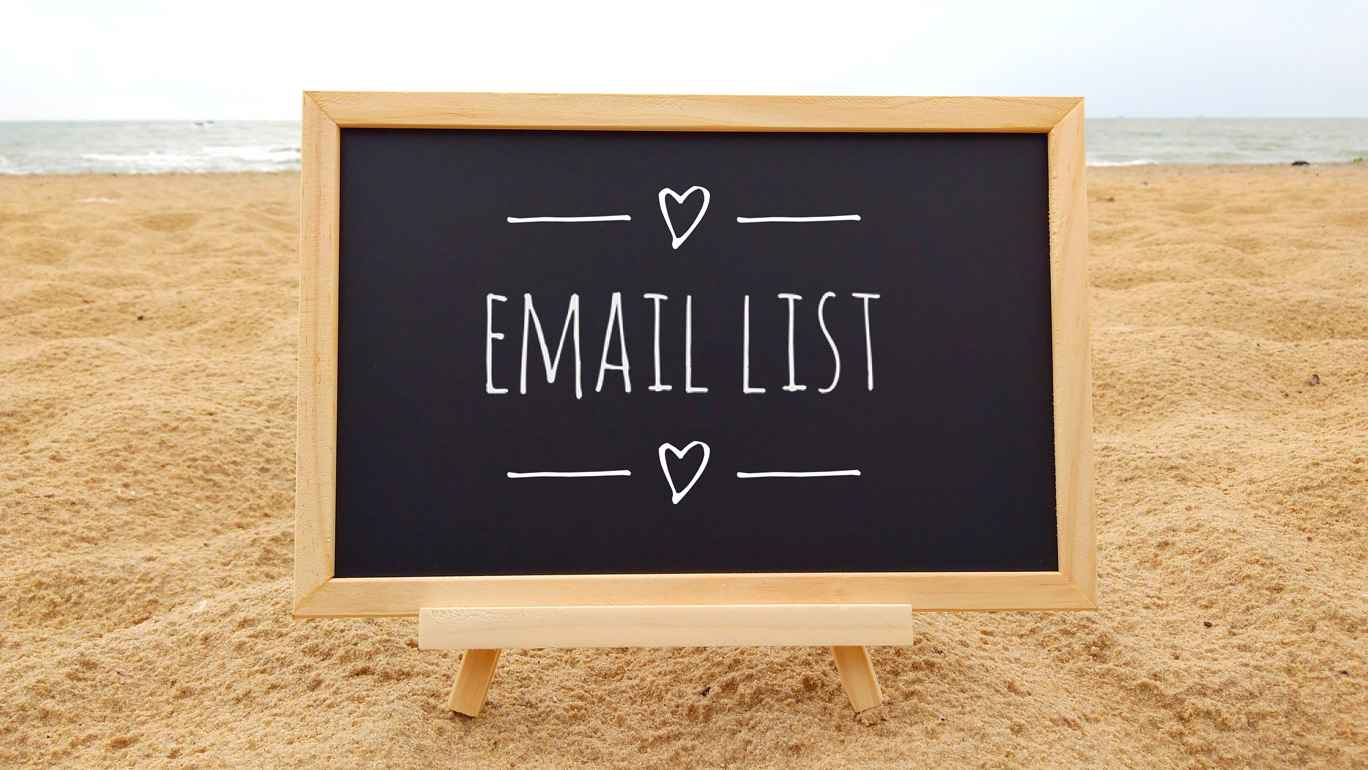- HOME
- Email marketing
- 5 Ways to Maintain Good E-mail Lists
5 Ways to Maintain Good E-mail Lists
- Last Updated : September 12, 2023
- 897 Views
- 5 Min Read

Email marketing, the most cost-effective digital marketing method, is a good fit for most internet businesses. For any targeted email marketing program to be effective, good email list hygiene is a must.
If you want to build a list of loyal subscribers, you'll need to get a good handle on a variety of action items related to email list management and maintenance. Think of list management as a way to expand, segment, and preserve the health of your email list. Email list management covers everything from managing bounced emails to importing an email database. Email list maintenance includes things like adding double opt-in signup forms to your website and launching a re-engagement campaign.
The purpose of email list management is to help you get the desired outcomes from your email blasts and direct marketing campaigns. Keeping track of your lists ensures that you're focusing your time and resources on the right subscribers at the right time. It's your job as a marketer to make sure you're continually adding new contacts to your email lists so you can keep growing.
What is an email list?
An email list is a collection of addresses that a business gathers by asking customers to provide their email addresses and consent to receive content and updates about the company via email.
Have the right contacts on your list
A foundational step is to think about how you'll get customer email addresses and what you'll do with them once you've got them. There are a number of ways you can set up a marketing email list, but it's very important that you only send emails to customers who have expressed an interest in receiving communications from your company.
To build a successful email marketing list, you first need to get your customers to want to receive your emails, and then you need to keep them engaged so they want to keep receiving them. Email marketing is permission marketing, which means you need the recipient's consent before sending them content. Permission can be collected in a variety of ways:
Add a consent form or button to your sign-up page when a customer subscribes to your product or service. Make sure the form is clear and follows the guidelines for the service you're requesting.
Set up confirmed opt-in (also known as double opt-in), which is when you give new users an email that includes a unique confirmation link that they must click to continue receiving emails from you.
Include a box in your sign-up flow that new users can check to indicate they want to receive emails from you.
Create forms for leads to enter their email addresses so they can receive updates and promotions from you.
To make sure your content is relevant and interesting enough to keep your recipients engaged, you can run surveys to ask your subscribers about their interest in what you’re actually sending. See what they want to receive info about by letting them pick which categories of content you provide they like the most, and then use that information to personalize your email communications with them.
Create concise and specific lists
As marketers, we often risk sending our subscribers too many emails, or, even worse, sending the same email to a contact multiple times. This can come across as unprofessional and annoy your subscribers, making them more likely to report you as spam or unsubscribe from your mailing list. Creating specific email lists is very important for marketing as it is crucial to filter your audience so that you know that your emails are reaching people who actually want to know about what you are promoting rather than shooting emails aimlessly into the void.
You can segment email lists based on the following factors:
User demographics, such as location, age, and gender.
The types of update users have told you they are interested in (discounts, event details, newsletters, etc.)
Purchase history
The specific plan, product, or service that the user has selected
Relationship to your company (vendors, customers, and partners should be getting separate emails)
Declutter your lists periodically
Good email hygiene means checking your email subscription list for incorrect or non-responsive addresses and removing them. List cleanliness has become a buzzword in the email marketing industry, and for good reason. Many businesses struggle with this aspect of list management, but keeping your mailing lists clean is critical to the effectiveness of your marketing activities.
Remove duplicate addresses
Remove or correct addresses that contain typos
Remove or update any invalid or retired addresses
It's critical to remove these addresses from your list since the lower your bounce rate, the better your sender reputation will be, and the more likely your messages are to be delivered.
Managing (un)subscriptions
Too much visibility in email marketing could be detrimental. Unsubscribing should be as simple as possible, just as the subscription process should be. When it comes to expanding an email list, the last thing you want to do is make subscribers feel stuck. If there's no clear way out, they'll simply put all of your emails in the spam folder so they don't have to deal with you again. And then your bounce rate, email deliverability, and reputation will all take a hit.
You want to focus on delivering targeted, relevant information to the people who are pleased to hear from you and let unengaged recipients be removed from the list, that's when you'll start to see the benefit of email marketing's high ROI. Email marketing requires you not only to obtain consent before you add a contact to your mailing list, but also to give them the option to unsubscribe at any time. In all your emails, make sure the unsubscribe button is visible and easy to find, so that they can opt-out easily.
Reignite with re-engagement
When it comes to unengaged subscribers, you have two options. You can either delete their address because they're hurting your sender reputation and ROI, or you can try to re-engage them. Before you delete a list member, try some re-engagement initiatives to reignite their interest in your product or service. Some re-engagement strategies include:
Make your subject lines more appealing.
Make your campaigns unique and tailor your messages to your segmented audience.
Reach out and ask them how you can assist them.
If they don't react within a specific amount of time, inform them that you're about to remove them from the list, giving them one last chance to choose to stay.
A robust email list can boost your email marketing ROI while also positioning your company for digital success. But no matter how much you want a long list of subscribers, remember that it's the quality, not the number, of your recipients that determines your success. The best strategy for email marketing success is to keep your list full of loyal, engaged subscribers.
Zoho Marketing Plus is a unified marketing platform that not only helps you manage your email lists, segment your audience, remove non-active users but also manage your social media, conduct surveys, webinars, and measure it all in one space, helping you to engage with your customers better than ever before!
Find out what Zoho Marketing Plus can do for you!
 Shruthi
ShruthiShruthi is a product marketer with Zoho. An aspiring marketing professional who is keen on creating exceptional product experiences. Feel free to start a conversation. I'm all ears!


